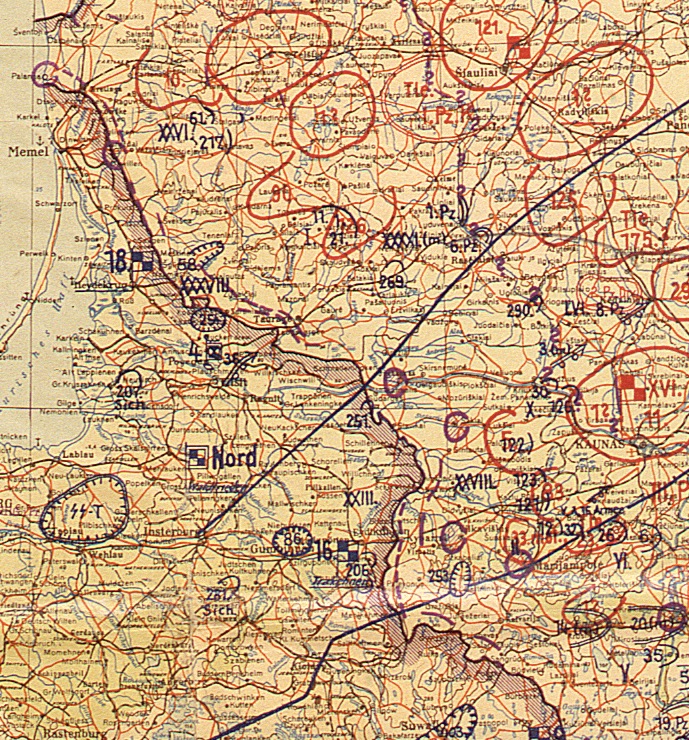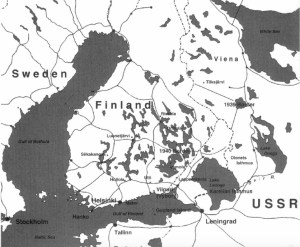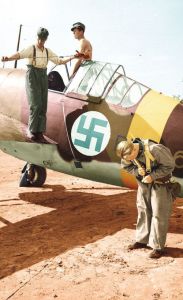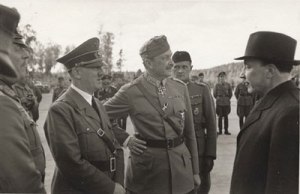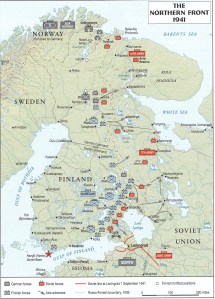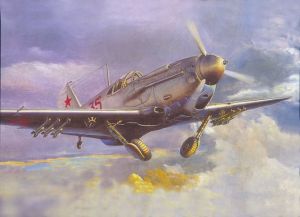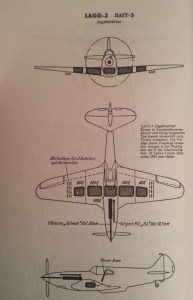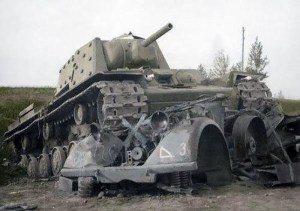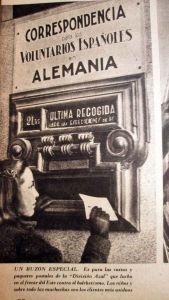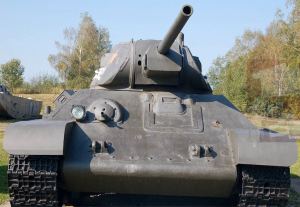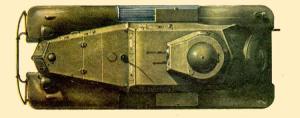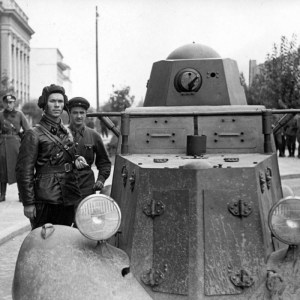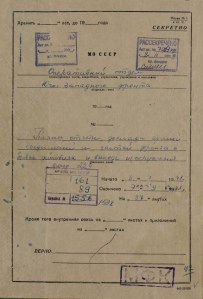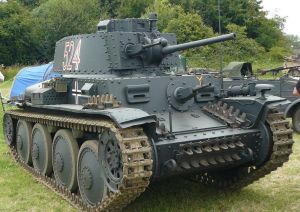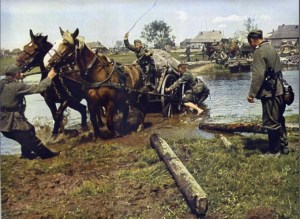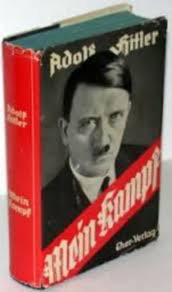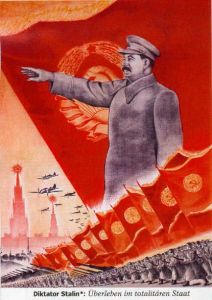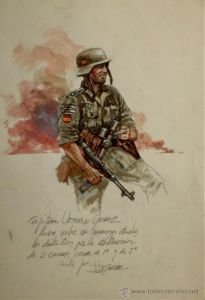[English version at the end]
PARTICIPANTES DE BARBARROJA
¡Ya a la venta Barbarroja 03:00 hrs!
ESPAÑA

- El contingente de voluntarios de Barcelona parte desde la estación de Francia con destino a Baviera, ante el clamor desbordante de los presentes.
El día 22 de junio de 1941 da comienzo la más grande operación militar de todos los tiempos. Una gesta que dará pie a un enfrentamiento nunca visto en la historia y que cuatro años más tarde con la derrota del Tercer Reich, habrá determinado, principalmente, la suerte de la Segunda Guerra Mundial en el viejo continente y un nuevo capítulo en el devenir mundial. En esa misma jornada el ministro de asuntos exteriores Ramón Serrano Suñer da la noticia al general Francisco Franco Bahamonde, jefe del estado español, y le propone in situ el envío de una fuerza de combate a la URSS. Franco da el visto bueno. Será el pistoletazo de salida para la creación de la popularmente conocida División Azul. En un principio los militares están dispuestos a enviar a todo un cuerpo de ejército. La consigna la dicta el mismo Serrano Suñer el 24 de junio desde el balcón de la Secretaría General del Movimiento en Madrid: «¡Rusia es culpable!», lema con el que enardece a las masas y señala directamente a Stalin y al bolchevismo como culpables de los desastres de la aún reciente Guerra Civil Española (1936-39).
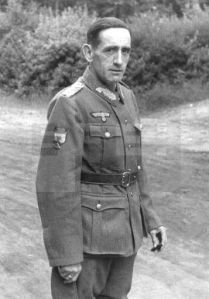
- General de división Agustín Muñoz Grandes, primer jefe de la División Española de Voluntarios. Nacido en Madrid en 1896 y veterano de las guerras de Marruecos, durante el periodo republicano es encargado de la formación de la Guardia de Asalto. Simpatizante de la Falange, durante la Guerra Civil Española llega a mandar un cuerpo de ejército. Muy apreciado por sus hombres, por su trato paternal y de carácter austero, continuará al mando hasta diciembre de 1942. Recibirá la Cruz de Caballero de la Cruz de Hierro con Hojas de Roble. Fallece en 1970.
No obtante la formación de una legión del tal magnitud es un asunto político delicado tanto dentro como fuera de las fronteras españolas. El envío de unidades regulares del Ejército español puede ser visto desde el extranjero como la entrada directa de España en la Segunda Guerra Mundial al lado del Eje. Un asunto no del agrado de Franco, consciente de la debilidad de España tras 3 años de cruenta guerra civil y temeroso a un bloqueo naval de la poderosa Royal Navy británica. Sabe que la potencia militar de Hitler no le puede ayudar en esto. Por otro lado, el general tiene una «deuda de honor» con Alemania e Italia por la ayuda decisiva aportada por Hitler y Mussolini en su victoria contra el gobierno republicano. Tomará una solución de compromiso en vista del clamor popular que se desata en España (liderado por el movimiento político Falange), ante esta «cruzada contra el comunismo», como se presenta al mundo la Operación Barbarroja: Franco acepta la participación de los entusiastas falangistas, pero los cuadros de mando y especialistas serán oficiales del ejército regular. El Estado Mayor Central respira aliviado, pues la Falange, principal rival en la política interna, no será la única en degustar las mieles de la «segura» victoria contra Stalin. El general Agustín Muñoz Grandes es puesto al mando y todos los oficiales de empleo superior a alférez procederán del ejército regular. La denominación oficial es Division Española de Voluntarios (DEV).
Por todo el territorio nacional se abren «banderines de engache» el 26 de junio (centros de reclutamiento) y la respuesta es masiva. No se produce en toda Europa un hecho semejante, incluida Alemania. La mayoría de los voluntarios son jóvenes universitarios de ideología falangista, médicos, abogados, ingenieros…pero también civiles sin afiliación política e incluso ex-combatientes del Ejército Republicano. La afluecia es tan apabullante que se dan casos de tener que acudir al socorrido «enchufe» para poder enrolarse. A los pocos días el embajador alemán en España, Stohrer, telegrafía a Berlin que el número de los que han acudido al alistamiento es 40 veces superior. Entre la tropa hay hasta rusos «blancos», exiliados tras la revolución rusa y veteranos del ejército de Franco, que ahora desean su oportunidad contra el comunismo de la URSS.
El 13 de julio los voluntarios empiezan a abandonar por ferrocarril suelo español, camino de los centros de entrenamiento en Alemania. En total serán 19 convoyes. En un periodo de unas tres semanas, de los presentados, se ha reclutado en España a unos 19.000 hombres. Es el equivalente a una división muy reforzada de infantería de la Wehrmacht. Quedan acuartelados en Grafenwöhr (Baviera), a partir de ahora su nuevo acuartelamiento de instrucción.
La División se organiza según el esquema normalizado español, es decir con 4 regimientos de infantería y uno de artillería, a diferencia del alemán, con sólo 3 regimientos de infantería. Son:
- 1.- Regimiento Rodrigo (coronel Miguel Rodrigo Martínez) > recluta en Madrid
- 2.- Regimiento Pimentel, futuro 262º Rgto. (coronel Pedro Pimentel Zayas)> recluta Valladolid, Burgos, La Coruña y Valencia
- 3.- Regimiento Vierna, futuro 263º Rgto. (coronel José Vierna Trábaga)> recluta en Cataluña y Valencia
- 4.- Regimiento Esparza, futuro 269º Rgto. (coronel José Martínez Esparza)> Andalucía
- 5.- Regimiento de Artillería Badillo, futuro 250º Rgto.

- El uniforme que visten es el normalizado de la Wehrmacht con la única excepción de un escudo en el brazo derecho con la incripción «España». El lateral del casco también porta los colores españoles. No obstante, muchos divisionarios de inclinación falangista se tomarán la libertad de vestir bajo la guerrera la camisa azul característica de esta formación política, con el cuello asomando por encima de la prenda reglamentaria alemana.
El 14 de julio de 1941 y como complemento a las fuerzas de tierra que España va a enviar al frente oriental, queda constituida también la Primera Escuadrilla Expedicionaria del contingente aéreo voluntario, que pasará a conocerse análogamente como la Escuadrilla Azul. Su oficial al mando es el comandante Ángel Salas Larrazábal, un fogueado aviador de la Guerra Civil Española y «as» de la caza con 16 derribos (más otro compartido) en su haber. Diez días más tarde parte hacia Berlín con su destacamento de aviadores, mecánicos y personal auxiliar.
A diferencia de sus camaradas de tierra, los aviadores españoles serán encuadrados en el Heeresgruppe «Mitte«<>Grupo de Ejércitos «Centro» del mariscal von Bock. Concretamente en la JG 27 <>Ala de Caza nº 27, como su 15ª escuadrilla, la 15.(spanische)/Jagdgeschwader 27. La unidad de caza, de reconocido prestigio, combatirá en el sector central del vasto frente oriental y llegará a las puertas de Moscú envuelta en una guerra de movimiento que la hará ir haciendo saltar de aeródromo en aeródromo constantemente. La mayor parte de las misiones que realicen los pilotos de Salas Larrazábal serán de escolta de bombarderos y ataque al suelo. Es una más de las unidades del 2. Luftflotte del mariscal de campo Kesselring.
A la mañana siguiente la División Azul queda ya para la historia oficialmente convertida en la 250ª División de Infantería de la Wehrmacht. Acabado el periodo de instrucción en menos de dos meses (antes de lo normal, al haber luchado muchos de los españoles en la guerra civil), los españoles empiezan a embarcar en los 128 trenes necesarios que les conducirán hacia el este, no sin antes haber reducido la «generosa» división de 4 a 3 regimientos. Muñoz Grandes decide disolver el Regimiento Rodrigo, convirtiendo a su coronel en su segundo al mando y redistribuyendo los efectivos de tropa sobrante entre los otros 3 regimientos.
El primer punto de concentración se sitúa entre Reuss y Grodno (Bielorrusia), donde se conoce la noticia de que la DEV será integrada en el 9. Armee (Strauss) y luego en el 4. Armee (von Kluge), ambas en el Heeresgruppe «Mitte»<>Grupo de Ejércitos «Centro». Su objetivo: Moscú. Es lo que todos los divisionarios anhelan y el objeto de su alistamiento. Para ello deberán marchar hasta el área de despliegue en Smolensk…¡a pie! Grodno… Lida… Vilnius… Ozmiana… Minsk… Borisov… Orsha… Gusino (río Dnieper)… Pero cuando Smolensk (la antesala de Moscú) se halla «a tiro de piedra», Muñoz Grandes ordena a sus hombres volver sobre sus pasos hacia Orsha y desde ahí hacia el norte: Vitebsk y Dno, al sur del lago Ilmen. ¿La razón? La DEV acaba de ser reasignada al 16. Armee (Busch) en el Heeresgruppe «Nord»<>Grupo de Ejércitos «Norte». Moscú ya no será el objetivo de la DEV sino la contención de las fuerzas de Zhukov en apoyo de la captura de Leningrado. Los divisionarios están consternados, pues se veían desfilando trunfalmente en las calles de Moscú en una campaña aplastante. Su área de despliegue inicial es ahora Novgorod y lo largo de las márgenes izquierdas del lago Ilmen y río Volkhov. Quedan bajo mando operativo más exactamente del I. Armeekorps (von Both). Los voluntarios españoles habrán recorrido finalmente a pie casi 1.000 kilómetros.
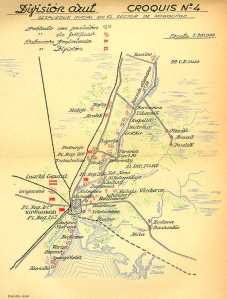
- Área de despliegue inicial en la márgen izquierda del río Volkhov y lago Ilmen.
Pero Leningrado, según decisión del Führer, no va a ser asaltada como Kiev, sino cercada y rendida por el hambre. Los españoles ayudarán en el dispositivo de von Leeb reemplazando a los elementos más meridionales de la 126. Infanterie Division (Laux) en Podberezhe y a toda la 18. Infanterie Division (Motorisierte) en Novgorod. Guarneciendo el Volkhov hay dos ejércitos soviéticos (52º de Klykov y 4º) y concretamente frente a los españoles están la 267º y 305º divisiones de fusileros (strelkovye divizye) y la 3º División Acorazada (tankovaya divizya). La primera es una formación de ucranianos que constantemente ha estado tanteando el terreno. A principios de octubre de 1941 la DEV ya está relevando a los alemanes en el sector y ocupan sus pozos de tirador. Españoles y soviéticos se empiezan a observar mutuamente en un sector de 60 kilómetros desde Lubkovo hasta el medio Ilmen al sur…
Muñoz Grandes llega a tiempo para verse envuelto en un plan estratégico de doble eje, el primero destinado a enlazar con los finlandeses al este del lago Ladoga (Tikhvin) y el segundo en dirección sureste hacia Kalinin (Tver), para apoyar el flanco izquiedo de la Operación Taifun (captura de Moscú). En lo que respecta a los españoles, el cruce del Volkhov y el consiguiente envolvimiento del lago Ilmen a lo largo de sus riberas orientales será parte de su misión.
16 de octubre de 1941, 13:00 horas: Muñoz Grandes inicia una operación de distracción para fijar la atención de la 267º División de Fusileros del general Selenkov, con el objeto de facilitar el cruce del Volkhov a la vecina 126 I. D. alemana. El Regimiento de Artillería Badillo (ahora denominado 250º Regimiento) inicia un fuego intenso contra las líneas adversarias y al coronel Esparza y su 269º Regimiento le corresponde el envío de una unidad incursora a través de los 300 metros del caudal del río…Comienza así la batalla de la cabeza de puente del Volkhov y la División Azul recibe su bautismo de fuego en tierras de la Madre Rusia…
¿Querrías conocer los detalles día a día de la Operación Barbarroja? Deja tu comentario abajo…
¡Adquiere la obra cronológica Barbarroja 03:00h en edición de coleccionista!

Sigue interesantes referencias también en Twitter @barbarroja0300h
[English version]
BARBAROSSA’S PARTICIPANTS
SPAIN
Mail box for the Spanish volunteers. Central post office in Madrid
The greatest military operation of all times commences on the 22nd of June, 1941. A feat of arms never ever seen in History that will end with the defeat of the Third Reich and that will have mainly sentenced World War II in Europe. A feat that will write a new page in a new World order. On that very same day the Spanish Foreign Affairs Minister, Ramón Serrano Suñer reports the news to General Francisco Franco Bahamonde, Spain’s Chief of State and proposes him to send a combat force to the USSR. This will trigger the creation of the soon-to-be known Blue Division<>División Azul. Initially the Military are poised to send a full army corps. The principles are dictated by the same Serrano Suñer on the 24th of June from the balcony of the Secretaría General del Movimiento in central Madrid to a spontaneously assembled crowd: “Russia is guilty!”, a motto that fires up the emotions of the demostrators and pinpoints directly to Stalin and the Bolshevism as culprits of the disasters and long suffering of the still recent Spanish Civil War (1936-1939).
However, the formation of such a large legion is a very delicate political matter either in Spain and outside her frontiers. The sending of a regular Spanish Army expeditionary force can be seen as the direct entry of Franco in the Second World War along with the Axis. The Chief of State wants to avoid this at all costs, as he is fully aware of the real potential of Spain after a bloody 3 year fratricide war and the chances of being consequently blockaded by the powerful British Royal Navy. He doesn’t trust Hitler can support him on this. But the General has an “debt of honor” with Germany and Italy due to the decisive help offered by Hitler and Mussolini in his victory against the Republican Government. He will still make a decision amidst this unprecedented unleashed popular fever (lead by the Falange<>Phalanx, a political force close to the Italian concept of Fascism) against this “Crusade against Communism”, as Operation Barbarossa is presented to the world: Franco accepts the participation of the enthusiastic phalanxes, but the officers and technical personnel will come from the Army. The Estado Mayor Central<>Central Headquarters is pleased, because this way the Phalanx, its main internal political opposition, won’t be the only one to enjoy the “guaranteed” victory against Stalin. General Agustín Muñoz Grandes is given the command and all the officers from lieutenant and above are to be from the regular Army. The official name given is División Española de Voluntarios<>Volunteers Spanish Division (DEV).
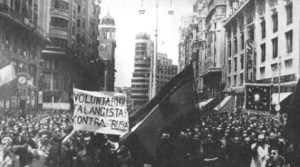
«Phalanx volunteers against Russia». The crowds take spontaneously the centre of Madrid claiming for a legion to defeat Communism.
Many recruiting centres are opened throughout the national territory on the 26th of June. The popular response is simply massive. Nowhere in Europe such an event has taken place, including Germany. Most of the volunteers are university students sympathizers of the Phalanx, doctors, lawyers, engineers…but also civilians with no political ideology and even ex-combatants of the defeated Republican Army. The reaction is so enthusiastic that many will have to prove to have “appropriate contacts” in order to get enlisted. A few days later the German Ambassador, Stohrer, wires Berlin announcing that the number of volunteers exceeds by 40 times the needs. Amongst the enlisted there are even “white Russians”, exiled after the Bolshevik Revolution and veterans of Franco’s Army, that now wish to take their revenge against the USSR Communism.
On the 13th of July the volunteers start their railroad journey towards the drill centres in Germany. In all it will consist of 19 convoys. In a matter of 3 weeks, out of the crowds arrived in to the recruitment offices, 19,000 have been enrolled. This equates a very reinforced Wehrmacht infantry division. Thus they arrive in Grafenwöhr (Bavaria), from now on their new instruction quarters.
The Division is organized following the standard Spanish structure, that is with 4 regiments and one another of artillery, in contrast to the German’s with only 3 regiments. They are:
1.- Regiment “Rodrigo” (Colonel Miguel Rodrigo Martínez) > Recruited in Madrid
2.- Regiment “Pimentel”, later 262nd Regt. (Colonel Pedro Pimentel Zayas)> Recruited in Valladolid, Burgos, La Coruña and Valencia
3.- Regiment “Vierna”, later 263rd Regt. (Colonel José Vierna Trábaga)> Recruited in Catalonia and Valencia
4.- Regiment “Esparza”, later 269th Regt. (Colonel José Martínez Esparza)> Recruited in Andalusia
5.- Artillery Regiment “Badillo”, later 250th Regt.
The «Blue Squadron» arrives at Moschna airfield in September 1941. Central Front. It consisted of 17 fighter pilots with 12 Bf-109 E-4/E-7’s. The training is carried out in Werneuchen (Berlin) in Jagdfliegerschule 1.
On the 14th of July, 1941 and as a complement to the ground forces Spain is sending to the Eastern Front, the first air squadron of this voluntary contingent is arranged. It will be also known as the Escuadrilla Azul<>Blue Squadron (oficially Primera Escuadrilla Expedicionaria). Major Ángel Salas Larrazábal is in command, a seasoned fighter pilot during the Spanish Civil War and and “ace” himself, credited with 16 kills (plus another one shared). Ten days later he sets off for Berlin with his detachment of pilots, technicians and other auxiliary personnel.
The aviators, unlike their army comrades, are to be assigned to Field Marshall’s von Bock‘s Heeresgruppe «Mitte»<>Army Group «Centre». Precisely into the JG 27<>27th Fighter Wing, as its 15th squadron, the 15.(spanische)/Jagdgeschwader 27. This fighter unit, with a recognized reputation, will take part in the vast central sector of the Russian Front and will arrive to the gates of Moscow in a lightning warfare that will force it to be continuously redeployed from aerodrome to aerodrome. Most of Salas Larrazábal’s pilots will fly bomber escort and air-to-ground attack missions. It is one another flying unit of Field Marshall Kesselring‘s 2. Luftflotte.

- «Comandante» Ángel Salas Larrazábal, in command of the 1st Expeditionary Squadron. Most of the missions of his «Blue Squadron» are bomber escort and ground attack. Deployed in Russia on the 26th of September, 1941, on the 4th of October the Spanish score their first aerial victory.
Just the next morning the Blue Division takes the official name of 250th Infantry Division in the Wehrmacht order of battle. When the drill finishes in less than two months (well before the standard, as many of the Spaniards are already combat veterans), they start boarding the 128 trains needed for their transportation to the front lines. But before that, the “generous” unit is shrunk from 4 to 3 regiments. Muñoz Grandes decides to disband Regiment “Rodrigo”, keeping its jobless chief as his new Deputy Commander and redeploying the surplus of forces amongst the remaining 3 regiments.
The first concentration point of forces stretches between Reuss and Grodno (Belarus), where news arrive confirming the integration of the DEV into the ranks of the 9. Armee (Strauss) and later into the 4. Armee (von Kluge), both belonging to the Heeresgruppe “Mitte”<> Army Group “Centre”. Its objective…Moscow. This is exactly what all the volunteers wish and the reason for enlisting. In order to accomplish with the task they must march all the way towards Smolensk on foot, the assembly area for the assault on Moscow. Grodno… Lida…Vilnius…Ozmiana…Minsk…Borisov…Orsha…Gusino (Dniepr river)…But when Smolensk is almost at the reach of their hands in a never ending foot march, Muñoz Grandes orders his men to turn back to Orsha and from there to the north: Vitebsk. The reason? The DEV has just been reassigned to the 16. Armee (Busch), that is into the ranks of Heeresgruppe “Nord”<>Army Group “North”. Moscow will not be any more the DEV’s objetive, but the contention of Zhukov’s troops in support of the capture of Leningrad. Its initial deployment area is the historical enclave of Novgorod, along the Western shores of the Volkhov river and lake Ilmen. The Spaniards are now under the operational command of the I. Armeekorps (von Both). When they finish their journey across Belarus and Russia the volunteers will have marched almost 1,000 kilometres on foot.

- The blue circle depicts the depolyment area and combat sectors of the 250th Infantry (Blue) Division in October, 1941.
Leningrad, as per the Führer’s decision, will not be assaulted having in mind the experience of the recent street fighting in Kiev, but will be besieged and surrendered by hunger. The Spaniards will help von Leeb’s strategy replacing the 126. Infanterie Division (Laux), specifically 2 of her regiments holding the lines along the waters of the Volkhov. Facing them to the East of the river the Soviet 267th and 305th fusiliers divisions (strelkovye devizye) are entrenched. The first one is a unit mainly composed by Ukrainians who have been probing the front lines with no interruption. At the beginning of October, 1941 the DEV is already replacing the Germans in the sector and start taking their foxholes. The Spaniards and the Soviets start observing each other along a 60 kilometre frontline from Lubkovo to the centre of the Ilmen lake to the south.
Muñoz Grandes arrives on time to see himself involved in an ambitious double-axis strategic plan. The first of them is planned for a final link with the Finnish Army due East of the Ladoga lake (Tikhvin) and the second is to suport directly the left flank of Operation «Taifun» (capture of Moscow) on an advance over Kalinin (Tver). Regarding the mission of the Spanish, the German Command expects them to surround the Eastern shores of the Ilmen lake as part of the task.
16th of October, 1941, 13:00 hours: Muñoz Grandes launches a diversionary attack in order to fix General Selenkov’s 267th Fusiliers Division to facilitate the crossing of the Volkhov by his neighbouring 126. Infanterie Division. The «Badillo» Regiment (now renamed as 25oth Regiment) opens an intense fire against the entrenched adversary. Colonel Esparza and his 269th Regiment is to send a marauding unit across the 300 metres of flowing water…Thus commences the Battle for the Volkhov bridgehead and the Blue Division receives her baptism of fire in Mother Russia…
Did you find this article interesting? Leave your comments below…
Follow other articles in Twitter @barbarroja0300h



